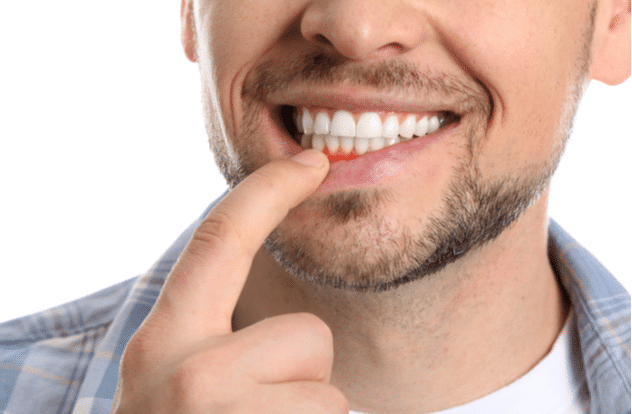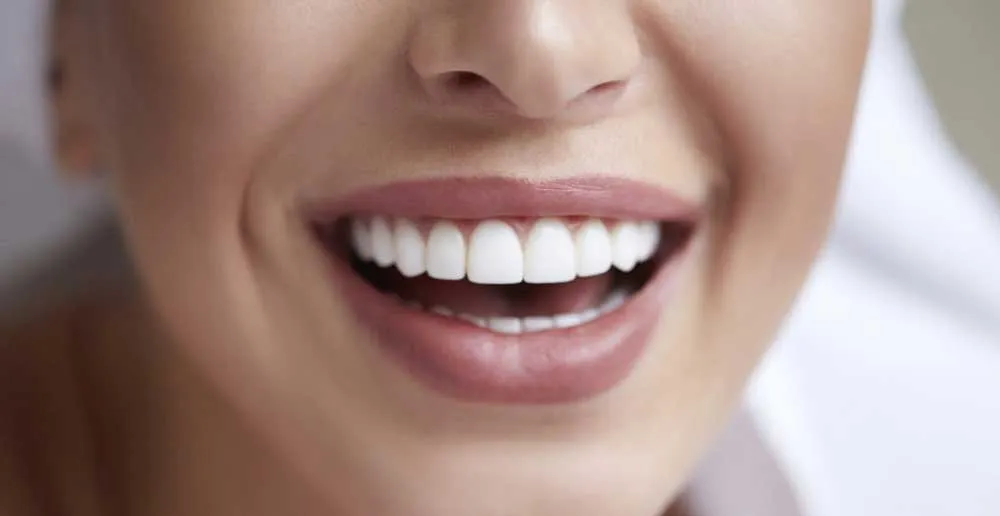Purple Gums? What Your Gums Say About Your Overall Health
Intro
When you look in the mirror and notice that your gums have taken on a purple hue, it may be a sign that something is wrong. This condition, known as Purple Gums, can be caused by a variety of factors, from age and smoking to more serious medical conditions. In this blog post, we’ll explore what your gums may be trying to tell you about your overall health and how you can address any potential issues.
Why are my gums turning purple?
If you’ve noticed that your gums are turning purple, you may be wondering what could be causing this unusual discoloration. While purple gums can sometimes be a normal part of the aging process or a side effect of certain medications, they can also indicate an underlying issue in your mouth.
One potential cause of purple gums is gum disease. When bacteria build up on your teeth and gums, it can lead to inflammation and infection. This can cause the gums to become discolored, including a purple or dark brown hue. If left untreated, gum disease can progress and lead to more serious oral health problems.
Another common cause of purple gums is smoking. The chemicals in tobacco products can cause a condition known as Smoker’s melanosis, where the gums develop a purple or brown discoloration. Smoking not only affects your lungs and overall health, but it can also have detrimental effects on your oral health, including an increased risk of gum disease.
While aging and medication can also contribute to purple gums, it’s important to consult with a dentist to determine the underlying cause. They can perform a thorough examination and provide a proper diagnosis. By addressing the root cause of the discoloration, you can take steps to improve your oral health and maintain healthy gums.

What causes purple gums?
Purple gums can be a cause for concern, as they may indicate an underlying issue with your oral health. There are several potential causes for purple gums, ranging from age-related changes to more serious conditions like gum disease or smoking-related discoloration.
As we age, our gums naturally thin and recede, which can lead to a darker, more purplish appearance. This is usually harmless and not a cause for worry. Similarly, certain medications, such as blood pressure medications or antiseizure drugs, can also cause gum discoloration.
However, purple gums can also be a sign of gum disease. Gum disease, or periodontal disease, is an infection of the gums and surrounding tissues. In its early stages, it may cause the gums to become red, swollen, and tender. If left untreated, it can progress and lead to purple or darkened gums.
For smokers, purple gums may be a result of a condition called Smoker’s melanosis. This occurs when tobacco use causes an excess of melanin, the pigment that gives color to our skin, to accumulate in the gums. Smoker’s melanosis typically presents as brown or purple spots on the gums.
Other potential causes of purple gums include poor oral hygiene, trauma to the gums, or certain medical conditions such as diabetes or certain types of cancer. If you notice persistent purple gums, it is important to visit your dentist for a thorough evaluation to determine the underlying cause and appropriate treatment.
Ageing and medication as potential causes
As we age, our gums can naturally begin to change in color. This is due to a decrease in blood flow to the gums, causing them to become thinner and more translucent. This can give them a purple or bluish tint, especially in areas where the gums are thin.
Additionally, certain medications can also cause gum discoloration. Medications that contain metals, such as iron or copper, can leave deposits in the gum tissue, leading to a darkened or discolored appearance.
If you are concerned that your gum discoloration may be related to medication, talk to your healthcare provider. They may be able to adjust your dosage or switch you to a different medication to alleviate the side effects.
It’s important to note that while ageing and medication can contribute to purple gums, it’s always a good idea to get a professional opinion from a dentist or oral healthcare provider. They can assess your oral health and determine if there is an underlying issue, such as gum disease or smoking, that may be causing the discoloration.

Gum disease as a possible cause
Gum disease is one of the most common causes of purple or discoloured gums. It occurs when bacteria builds up in the mouth and forms a sticky substance known as plaque. If the plaque isn’t removed through brushing and flossing, it can harden into tartar and cause inflammation and infection in the gums.
In the early stages of gum disease, also known as gingivitis, the gums may become red, swollen and bleed when brushing or flossing. If left untreated, the condition can progress to periodontitis, a more severe form of gum disease that can cause damage to the bones and tissues that support the teeth.
If you suspect that gum disease may be the cause of your purple gums, it’s important to see a dentist as soon as possible. Your dentist will examine your gums and may recommend a deep cleaning treatment known as scaling and root planing to remove the bacteria and plaque from your teeth and gums. They may also prescribe antibiotics to treat any infection.
In some cases, surgery may be necessary to repair the damage caused by gum disease. However, with proper dental care and regular cleanings, gum disease can often be prevented and treated before it causes any serious complications.
Smoker’s melanosis – a common cause of purple gums in smokers
Smoker’s melanosis is a term used to describe the discoloration of the gums that can occur in individuals who smoke cigarettes or use other tobacco products. The discoloration is caused by the chemicals present in tobacco smoke, which can penetrate the tissues of the mouth and cause the gums to turn purple or brown.
When someone smokes, the blood vessels in their gums become constricted, reducing blood flow and oxygen to the tissues. This lack of oxygen can cause the gums to take on a dark or purple hue. Over time, the discoloration can become more pronounced and widespread.
Smoker’s melanosis is a relatively common condition among smokers, with research suggesting that it affects up to 21% of smokers. It is important to note that the discoloration is usually benign and not a cause for immediate concern. However, it should serve as a reminder of the harmful effects of smoking on oral health.
The best way to prevent or reverse smoker’s melanosis is to quit smoking. By quitting, individuals can improve blood flow to the gums, allowing them to regain a healthy pink color over time. Additionally, quitting smoking can significantly reduce the risk of developing more serious oral health issues such as gum disease, tooth decay, and oral cancer.
If you are a smoker and have noticed purple or brown discoloration in your gums, it is essential to consult with a dentist or healthcare professional. They can evaluate your oral health and provide guidance on how to quit smoking and improve the condition of your gums. Remember, quitting smoking not only benefits your oral health but also your overall well-being.
Other potential causes to consider
In addition to gum disease and smoker’s melanosis, there are a few other potential causes to consider when it comes to purple gums. One possible cause is poor oral hygiene. When we don’t brush and floss regularly, plaque and bacteria can build up along the gumline, leading to inflammation and discoloration. Another potential cause is certain medical conditions, such as vitamin deficiencies or immune disorders. Vitamin C deficiency, for example, can lead to bleeding and inflamed gums, which may appear purple. Similarly, immune disorders like lupus or certain autoimmune diseases can cause changes in the gums’ color. Additionally, hormonal changes during pregnancy or menopause can sometimes lead to discoloration of the gums. Hormonal fluctuations can affect blood flow and capillary integrity, resulting in a purplish appearance. Lastly, certain lifestyle factors, such as excessive alcohol consumption or poor nutrition, can contribute to gum discoloration. Alcohol can irritate the gums, causing them to become discolored, while poor nutrition can lead to deficiencies that affect the gums’ health. It’s important to note that if you notice any changes in your gums’ color or overall oral health, it’s best to consult with a dentist for a proper diagnosis and treatment plan.
How to diagnose the underlying cause of purple gums
If you’ve noticed purple gums, it’s important to get a professional opinion to determine the underlying cause. The first step is to schedule an appointment with your dentist. They will examine your gums and perform a thorough dental cleaning to rule out any plaque buildup or gum disease.
If your gums show no signs of disease or plaque, your dentist may refer you to a medical professional to investigate other possible causes. Your medical professional may perform blood tests to check for conditions such as anemia or a vitamin deficiency.
If you smoke, quitting smoking can be a great start in preventing further discolouration of the gums. Your dentist or medical professional may recommend a specific treatment based on your condition and its underlying cause. Treatment could range from prescription mouthwash to more extensive gum disease treatment.
If the purple discolouration is a result of medication, it’s important to speak to your doctor about potentially switching to a different medication.
Ultimately, identifying and treating the underlying cause of purple gums is essential for maintaining good oral health and overall health.

